Simple, like a neutron star
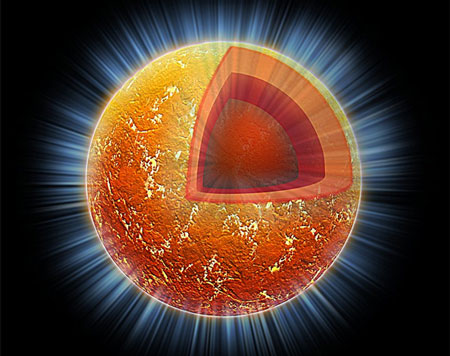 New research demonstrates that in certain respects these stars can instead be described very simply and that they show similarities with black holes.
New research demonstrates that in certain respects these stars can instead be described very simply and that they show similarities with black holes.
Mar 25th, 2014
Read more
 Subscribe to our Space Exploration News feed
Subscribe to our Space Exploration News feed
 New research demonstrates that in certain respects these stars can instead be described very simply and that they show similarities with black holes.
New research demonstrates that in certain respects these stars can instead be described very simply and that they show similarities with black holes.
Mar 25th, 2014
Read moreRecently physicists have been poking holes again in Stephen Hawking's black hole theory - including Hawking himself. Now professor Chris Adami, Michigan State University, has jumped into the fray. He believes he has solved the decades-old information paradox debate in a groundbreaking new study.
Mar 24th, 2014
Read more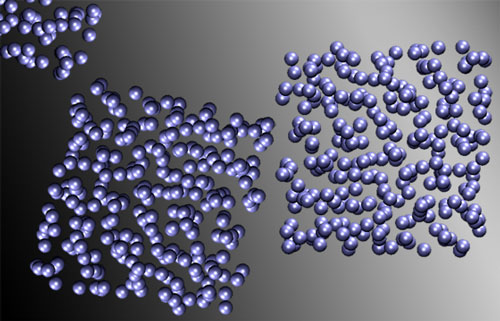 Scientists used a simulation model that is far more accurate than previously used, and carried out an experiment to test a hypothesis about the behaviour of hydrogen that is splitting the scientific community.
Scientists used a simulation model that is far more accurate than previously used, and carried out an experiment to test a hypothesis about the behaviour of hydrogen that is splitting the scientific community.
Mar 24th, 2014
Read more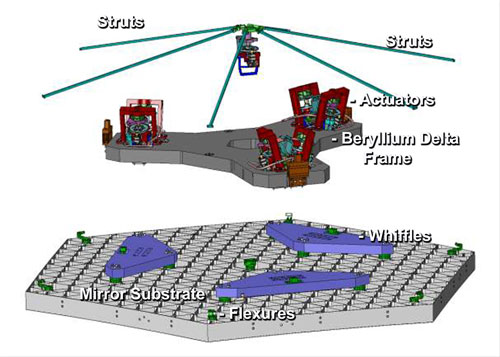 New technology created Webb mirrors.
New technology created Webb mirrors.
Mar 20th, 2014
Read more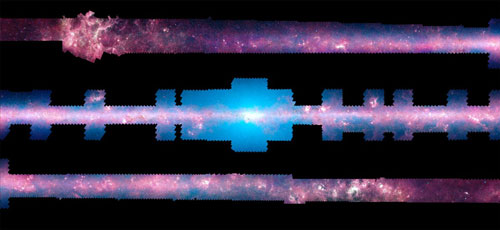 Touring the Milky Way now is as easy as clicking a button with NASA's new zoomable, 360-degree mosaic presented Thursday at the TEDActive 2014 Conference in Vancouver, Canada.
Touring the Milky Way now is as easy as clicking a button with NASA's new zoomable, 360-degree mosaic presented Thursday at the TEDActive 2014 Conference in Vancouver, Canada.
Mar 20th, 2014
Read more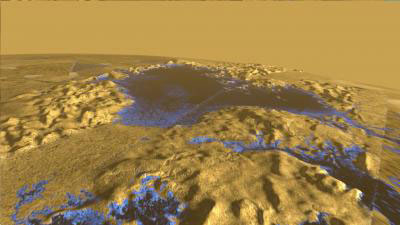 Using radar measurements gathered by NASA's Cassini spacecraft, geophysicists have concluded that the surface of Ligeia Mare, Titan's second largest sea, has a mirror-like smoothness, possibly due to a lack of winds. As the only other solar system body with an Earth-like weather system, Titan could serve as a model for studying our own planet's early history.
Using radar measurements gathered by NASA's Cassini spacecraft, geophysicists have concluded that the surface of Ligeia Mare, Titan's second largest sea, has a mirror-like smoothness, possibly due to a lack of winds. As the only other solar system body with an Earth-like weather system, Titan could serve as a model for studying our own planet's early history.
Mar 20th, 2014
Read more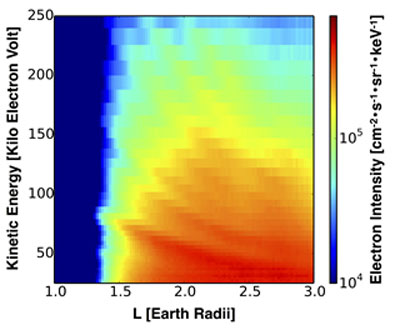 Scientists have discovered a new, persistent structure in Earth's inner radiation belt using data from the twin NASA Van Allen Probes spacecraft. Most surprisingly, this structure is produced by the slow rotation of Earth, previously considered incapable of affecting the motion of radiation belt particles, which have velocities approaching the speed of light.
Scientists have discovered a new, persistent structure in Earth's inner radiation belt using data from the twin NASA Van Allen Probes spacecraft. Most surprisingly, this structure is produced by the slow rotation of Earth, previously considered incapable of affecting the motion of radiation belt particles, which have velocities approaching the speed of light.
Mar 19th, 2014
Read more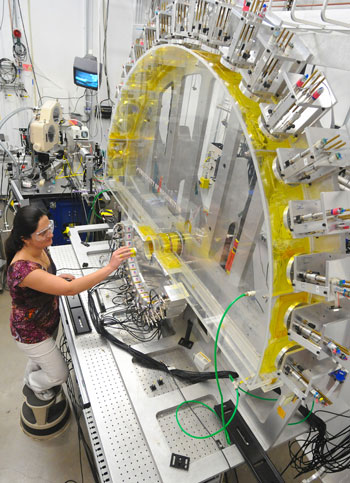 The U.S. Department of Energy's Joint Center for Energy Storage Research (JCESR) and NASA Glenn Research Center are collaborating to develop next-generation batteries for use in future space missions.
The U.S. Department of Energy's Joint Center for Energy Storage Research (JCESR) and NASA Glenn Research Center are collaborating to develop next-generation batteries for use in future space missions.
Mar 19th, 2014
Read more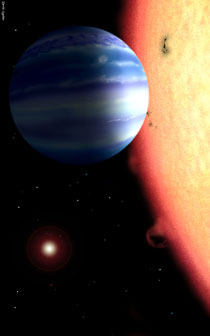 Researchers have detected water vapor in the atmosphere of a planet outside our solar system. The team applied a sophisticated Doppler technique to the infrared to directly detect the planet and demonstrate the presence of water in its atmosphere.
Researchers have detected water vapor in the atmosphere of a planet outside our solar system. The team applied a sophisticated Doppler technique to the infrared to directly detect the planet and demonstrate the presence of water in its atmosphere.
Mar 19th, 2014
Read more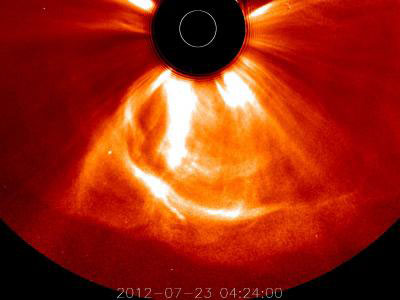 On July 23, 2012, a huge magnetic storm propelled by two nearly simultaneous coronal mass ejections on the sun plowed through Earth's orbit. Luckily, Earth was on the other side of the sun at the time. Had the outburst hit Earth, however, it would have rivaled the largest magnetic storm to strike Earth in recorded history, possibly wreaking havoc with the electrical grid, satellites and GPS.
On July 23, 2012, a huge magnetic storm propelled by two nearly simultaneous coronal mass ejections on the sun plowed through Earth's orbit. Luckily, Earth was on the other side of the sun at the time. Had the outburst hit Earth, however, it would have rivaled the largest magnetic storm to strike Earth in recorded history, possibly wreaking havoc with the electrical grid, satellites and GPS.
Mar 19th, 2014
Read more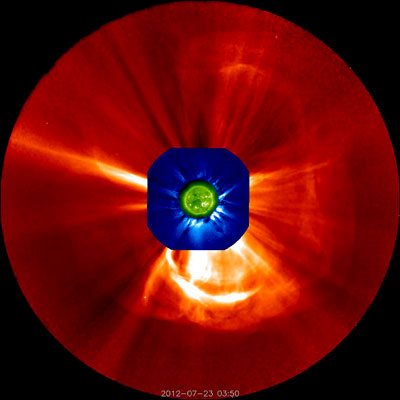 Scientists uncover the origin and cause of an extreme space weather event that occurred on July 22, 2012 at the sun and generated the fastest solar wind speed ever recorded directly by a solar wind instrument.
Scientists uncover the origin and cause of an extreme space weather event that occurred on July 22, 2012 at the sun and generated the fastest solar wind speed ever recorded directly by a solar wind instrument.
Mar 18th, 2014
Read more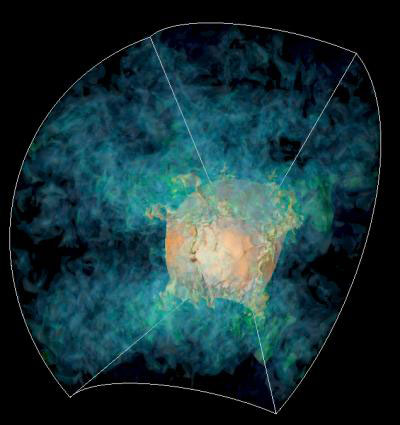 A powerful, new three-dimensional model provides fresh insight into the turbulent death throes of supernovas, whose final explosions outshine entire galaxies and populate the universe with elements that make life on Earth possible.
A powerful, new three-dimensional model provides fresh insight into the turbulent death throes of supernovas, whose final explosions outshine entire galaxies and populate the universe with elements that make life on Earth possible.
Mar 18th, 2014
Read more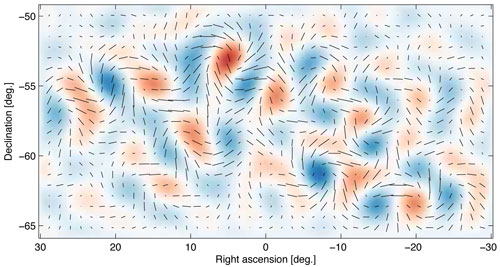 Uniquely cold and dry conditions of the atmosphere over Antarctica's polar plateau made the observations possible.
Uniquely cold and dry conditions of the atmosphere over Antarctica's polar plateau made the observations possible.
Mar 18th, 2014
Read more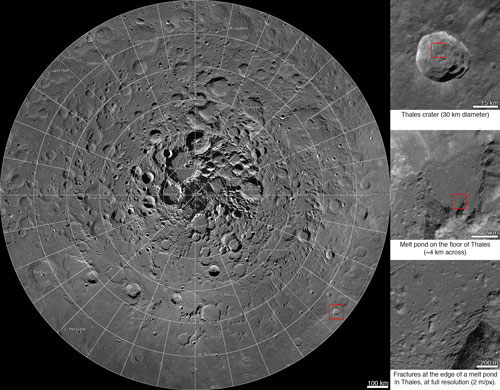 Scientists, using cameras aboard NASA's Lunar Reconnaissance Orbiter (LRO), have created the largest high resolution mosaic of our moon's north polar region. The six-and-a-half feet (two-meters)-per-pixel images cover an area equal to more than one-quarter of the United States.
Scientists, using cameras aboard NASA's Lunar Reconnaissance Orbiter (LRO), have created the largest high resolution mosaic of our moon's north polar region. The six-and-a-half feet (two-meters)-per-pixel images cover an area equal to more than one-quarter of the United States.
Mar 18th, 2014
Read more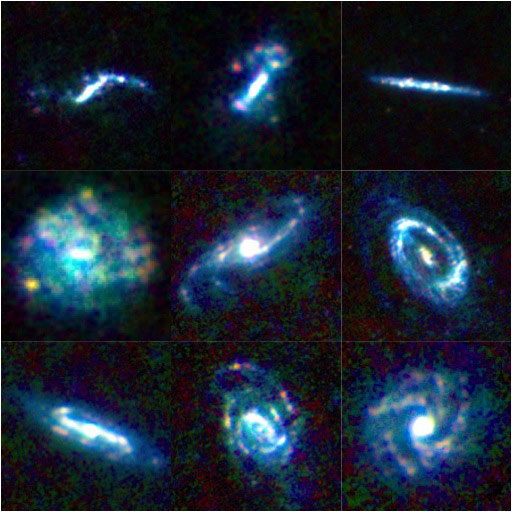 An international team of astronomers has completed a benchmark study of more than 300 galaxies, producing the largest census of dust in the local Universe, the Herschel Reference Survey.
An international team of astronomers has completed a benchmark study of more than 300 galaxies, producing the largest census of dust in the local Universe, the Herschel Reference Survey.
Mar 18th, 2014
Read more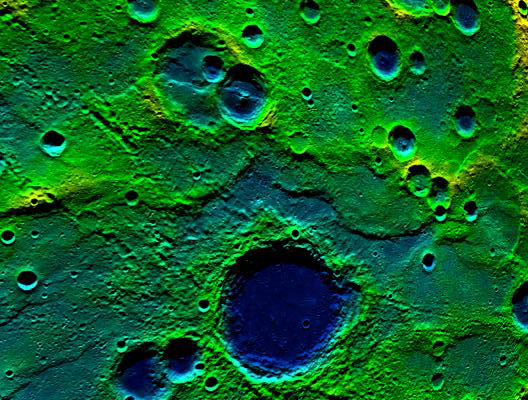 New global imaging and topographic data from MESSENGER show that the innermost planet has contracted far more than previous estimates. The results are based on a global study of more than 5,900 geological landforms, such as curving cliff-like scarps and wrinkle ridges, that have resulted from the planet's contraction as Mercury cooled. The findings are key to understanding the planet's thermal, tectonic, and volcanic history, and the structure of its unusually large metallic core.
New global imaging and topographic data from MESSENGER show that the innermost planet has contracted far more than previous estimates. The results are based on a global study of more than 5,900 geological landforms, such as curving cliff-like scarps and wrinkle ridges, that have resulted from the planet's contraction as Mercury cooled. The findings are key to understanding the planet's thermal, tectonic, and volcanic history, and the structure of its unusually large metallic core.
Mar 17th, 2014
Read more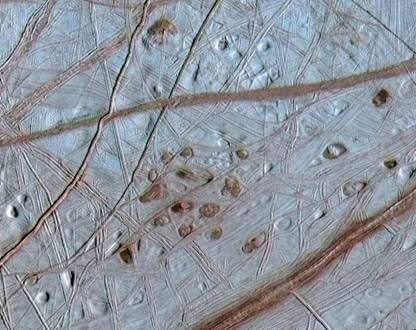 Water, salts and gases dissolved in the huge ocean that scientists believe could exist below Europa's icy crust can rise to the surface generating the enigmatic geological formations associated to red-tinged materials that can be seen on this Jupiter's satellite.
Water, salts and gases dissolved in the huge ocean that scientists believe could exist below Europa's icy crust can rise to the surface generating the enigmatic geological formations associated to red-tinged materials that can be seen on this Jupiter's satellite.
Mar 14th, 2014
Read moreA new study by ESA's Clean Space initiative - tasked with reducing the space industry's environmental impacts on both Earth and space - aims to evaluate battery behaviour after a satellite shuts down, assessing the risk of breakup and ensuring full 'passivation'.
Mar 13th, 2014
Read more